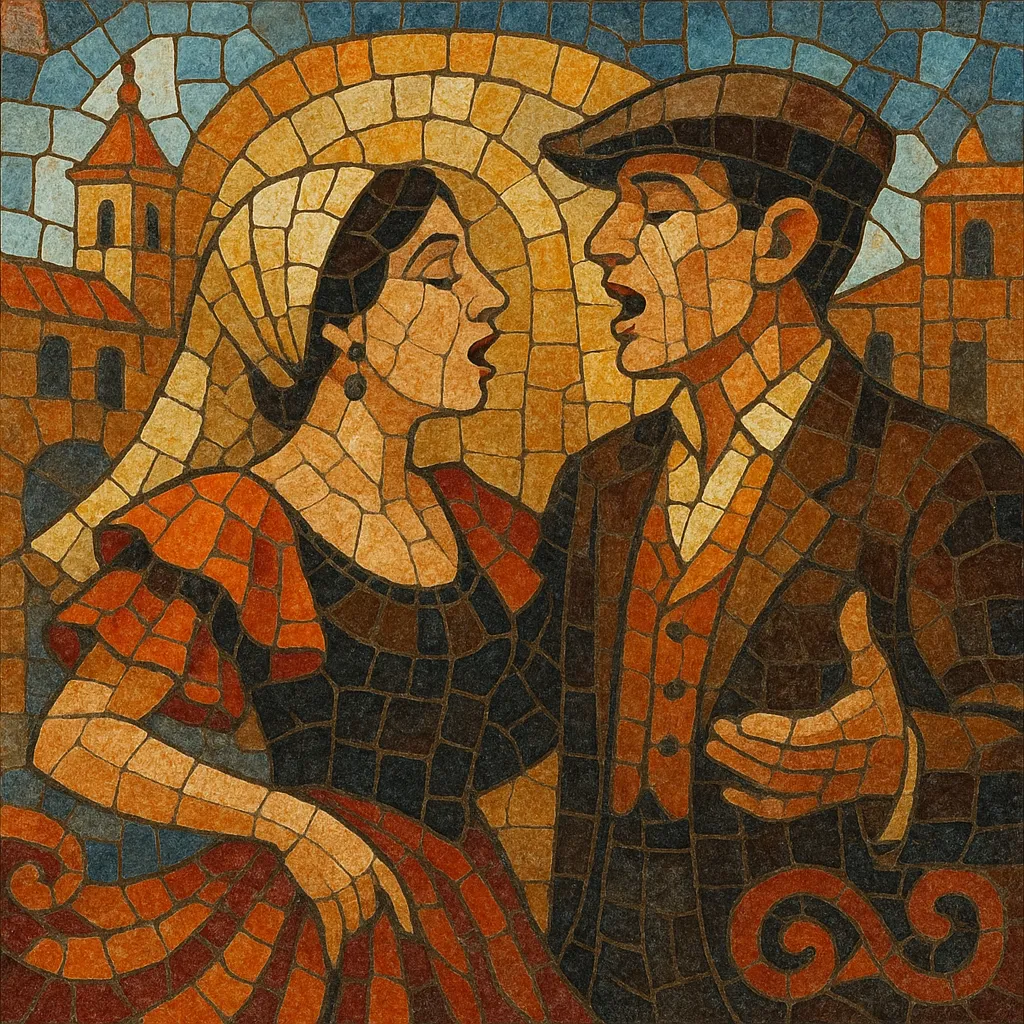Zarzuela is a Spanish lyric‑dramatic genre that alternates spoken dialogue with sung numbers such as romanzas (arias), ensembles, and choruses. It blends courtly and popular musical idioms, weaving in Spanish dance rhythms (seguidillas, fandangos, jotas, chotis) and vivid costumbrista (everyday-life) scenes.
Two principal formats emerged: the expansive zarzuela grande (multi‑act, operatic in scope) and the género chico (one‑act, agile, and often comedic). Across all forms, zarzuela prizes clear storytelling, tuneful melodies, rhythmic vitality, and a strong sense of place, often portraying Madrid’s barrios or regional Spain with humor, sentiment, and social observation.
Zarzuela originated in mid‑17th‑century Spain at the royal hunting lodge, the Palacio de la Zarzuela, near Madrid—hence the name. Early works by composers such as Juan Hidalgo de Polanco, often with libretti by Golden Age playwrights (notably Pedro Calderón de la Barca), fused courtly Baroque music with vernacular theater. These Baroque zarzuelas alternated spoken scenes with musical numbers and drew on Spanish song and dance types (jácaras, seguidillas, villancicos), establishing a flexible, hybrid stage form.
Through the 1700s, zarzuela coexisted with Italian opera in Spain. The genre absorbed and dialogued with imported operatic styles while maintaining Spanish dances and spoken dialogue. The tonadilla (a popular theatrical song type) and other short stage pieces fed material and spirit into zarzuela’s evolving language and helped keep a distinctly Spanish voice alive on the stage.
A major revival in the mid‑19th century defined zarzuela’s classic identity. Francisco Asenjo Barbieri and contemporaries (including Ruperto Chapí, Tomás Bretón, and Federico Chueca) consolidated two main formats: zarzuela grande (multi‑act, weightier plots) and género chico (one‑act, fast‑paced comedies often tied to Madrid’s everyday life). The era’s scores mixed bel canto lyricism with dance rhythms like the jota, bolero, and emergent urban styles (e.g., chotis), paralleling but distinct from French opéra comique and Central European operetta.
Composers such as Amadeo Vives, Gerónimo Giménez, José Serrano, Pablo Sorozábal, and Federico Moreno Torroba sustained a golden age into the early 20th century. Works like La verbena de la Paloma, Doña Francisquita, and Luisa Fernanda became repertory pillars—melodic, characterful, and theatrically direct. Zarzuela spread across the Spanish‑speaking world and inspired local variants (e.g., the Philippine “sarswela”).
While the genre’s commercial dominance waned as cinema and musicals rose, zarzuela remained a living tradition through revivals, recordings, and new productions. Modern stagings highlight its nimble blend of song, dance, dialogue, and social portraiture, affirming zarzuela as Spain’s signature contribution to musical theatre history.


